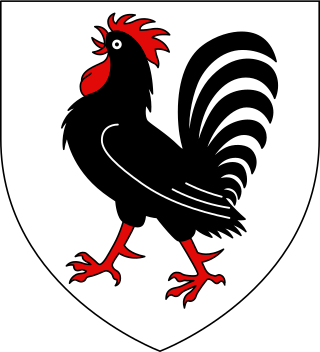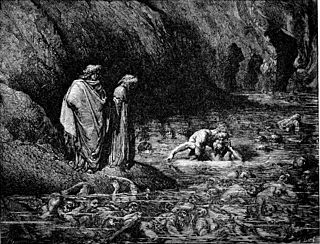Story
Constantine I of Gallura may have been a member of the family, ruling Gallura on behalf of the Archdiocese of Pisa.
The Gherardeschi had a rivalry with the House of Visconti, another Ghibelline family of Pisa. In 1237, the Archbishop and the Emperor Frederick II intervened in Pisa to reconcile the two rivals, but failed. In 1254, the citizenry rebelled and imposed twelve Anziani del Popolo ("Elders of the People") as their political representatives.
Early on in the century, the Gherardeschi took an interest in the affairs of Pisa in Sardinia. In 1230, Ubaldo of Gallura, a Visconti, invaded the Giudicato of Cagliari, but the Gherardeschi repulsed him in the name of Benedetta and the young William II. In 1258, they received a third of Cagliari after its dismemberment. Their third was the south-western third; in the 1272 circa the count Ugolino della Gherardesca founded in the Cixerri the important mining town of Villa di Chiesa, today Iglesias. A Gherardesca woman also married John Visconti, the Judge of Gallura, who had received the northeastern third of Cagliari. This marriage brought final reconciliation between the Visconti and Gherardeschi.
The Gherardeschi reached their height in Pisa in the person of Ugolino della Gherardesca in the 1270s and 1280s. He was forced to share power with his nephew Nino Visconti, but they soon quarrelled. The fed-up Pisans arrested Ugolino and deposed Nino from Gallura.
After Ugolino della Gherardesca's betrayal in the battle of Meloria, the House of Orlandi also began rivalries with the Gherardeschi.
There is a Gherardesca Chapel in the church of Saint Francis in Pisa.
Ugolino is an Italian masculine given name that is a diminutive form of Ugo. It may also refer to:

Ugolino della Gherardesca, Count of Donoratico, was an Italian nobleman, politician and naval commander. He was frequently accused of treason and features prominently in Dante's Divine Comedy.

The Republic of Pisa was an independent state existing from the 11th to the 15th century and centered on the Tuscan city of Pisa. It rose to become an economic powerhouse, a commercial center whose merchants dominated Mediterranean and Italian trade for a century, before being surpassed and superseded by the Republic of Genoa.

The Judicate of Cagliari was one of the four kingdoms or judicates into which Sardinia was divided during the Middle Ages.

Ugolino Visconti, better known as Nino, was the Giudice of Gallura from 1275 or 1276 to his death. He was a son of Giovanni Visconti and grandson of Ugolino della Gherardesca. He was the first husband of Beatrice d'Este, daughter of Obizzo II d'Este. His symbol was a cock.

The Judicate of Gallura was one of four Sardinian judicates in the Middle Ages. These were independent states whose rulers bore the title iudex, judge. Gallura, a name which comes from gallus, meaning rooster (cock), was subdivided into ten curatoriae governed by curatores under the judge. In the 13th century, the arms of Gallura contained a rooster.
Torchitorio V, born John and known as Chiano or Chianni, was the Giudice (Judge) of Cagliari from 1250 to his death. His reign was brief but transformative in the history of Sardinia.
Benedetta was the daughter and heiress of William I of Cagliari and Adelasia, daughter of Moroello Malaspina. She succeeded her father in January or February 1214.
JohnVisconti was the Judge of Gallura from 1238 to his death. He was a member of the Visconti dynasty of Pisa.

Joannaof Gallura, also known as Giovanna Visconti, was the last titular Judge (giudicessa) of Gallura. Joanna claimed her rights in Sardinia to no avail and eventually sold them to her relatives, the Visconti of Milan, who later sold them to the Crown of Aragon. She is mentioned passingly by Dante Alighieri in the Divine Comedy. Her father, a friend of Dante's, but consigned to Purgatory with the other negligent rulers, asks her to be reminded of him.
William II Salusio V was the Judge of Cagliari from 1232 to his death. His Christian name was William, but his regnal name was Salusio, based on ancient Cagliaritan traditions which alternated their rulers between the forenames Torchitorio and Salusio. He would have been called Salusio in official documents, though he is known historically as William, after his grandfather, William I.
William III, of the House of Massa, was the last Judge of Cagliari, ruling under the name Salusio VI from 1256 to his deposition in 1258. He is also known as Guglielmo Cepolla or Cipolla.
William of Capraia was the regent for Marianus II of Arborea from 1241 until his death, being entitled "Judge" from 1250 on.

Marianus II was the Judge of Arborea from 1241 to his death. With skilled military action, he came to control more than half of the island of Sardinia. By his control of the vast central plains and the rich deposits of precious metals, he increased the riches of his Judicate and staved off the general economic decline affecting the rest of Europe at the time.

John, nicknamed Chiano, was the Judge of Arborea from 1297 to his death.
Anselm of Capraia was a Pisan count. His political activity extended from the Republic of Pisa to Sardinia.

Ruggieri degli Ubaldini was an Italian archbishop.

The Aragonese conquest of Sardinia took place between 1323 and 1326. The island of Sardinia was at the time subject to the influence of the Republic of Pisa, the Pisan della Gherardesca family, Genoa and of the Genoese families of Doria and the Malaspina; the only native political entity survived was the Judicate of Arborea, allied with the Crown of Aragon. The financial difficulties due to the wars in Sicily, the conflict with the Crown of Castile in the land of Murcia and Alicante (1296-1304) and the failed attempt to conquer Almeria (1309) explain the delay of James II of Aragon in bringing the conquest of Sardinia, enfeoffed to him by Pope Boniface VIII in 1297.

The Visconti of Pisa and Sardinia were an Italian noble dynasty of the Middle Ages. They achieved prominence first in Pisa, then in Sardinia, where they became rulers of Gallura.

Beatrice d’Este was an Italian noblewoman, now primarily known for Dante Alighieri's allusion to her in Purgatorio, the second canticle of the Divine Comedy. Through her first marriage to Nino Visconti, she was judge (giudichessa) of Gallura, and through her second marriage to Galeazzo I Visconti, following Nino’s death, lady of Milan.











